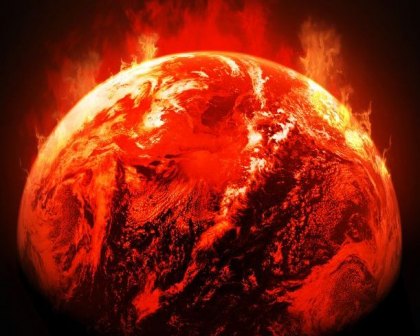
For the third year in a row, the Earth has grown warmer, scientists from NASA and the National Oceanic and Atmospheric Administration, or NOAA, said during an annual teleconference on the climate. Here’s the rundown:
How hot was it? The global average of temperatures was 1.78 degrees Fahrenheit (0.99 degrees Celsius) warmer than the mid-20th century average -- about 57 degrees Fahrenheit. A NASA news release said the past 12 months were the warmest on record globally since record-keeping began in 1880. Not only that, 16 of the 17 warmest years on record have occurred since 2001.
Are humans responsible? Scientists consider all possible impacts on the climate -- everything from volcanoes to human pollution. “We find the individual fingerprints for all those different things,” said Gavin Schmidt, a climate researcher at NASA's Goddard Institute for Space Studies. “Pretty much all of the long-term trends that you are seeing are, in fact, attributable to human activity.”
Much research focuses on changes in the Arctic and the Antarctic. How do those changes impact the population? “Both areas are very different from each other. They are both important for global weather patterns,” said Deke Arndt, chief of the global monitoring branch of NOAA's National Centers for Environmental Information in Asheville, North Carolina. “There has been recent research that suggests that changes in the Arctic may be manifesting themselves in changes in the jet stream and associated weather patterns."Later, when talking about the Arctic and Antarctic, Arndt pointed out, “If that snow and ice goes away, especially during the times of year when the sun is high in the sky … that feeds back into the climate system. It is connected with the climate system that we share around the globe. It is an important climate driver and it is an important climate indicator.”
The Paris Agreement, signed in 2015 by leaders around the world, attempts to limit the temperature increase to 1.5 degrees Celsius above pre-industrial levels. When will we reach this limit? Scientists aren’t sure. “We have, I think, clearly passed one degree above pre-industrial temperatures,” Schmidt said. “And I think it is unlikely that we will go below that.”
What is the takeaway for policymakers? Scientists just wouldn’t go there. “We provide these assessments and these analyses for the benefit of the American people,” Arndt said. “That’s kind of what we do. Our mission is strictly to describe the state of the climate and our methods of how we got there.”
What do scientists foresee for 2017? The year started with cooler temperatures. Even so, the long-term trends are clear, and this will likely be among the top five hottest years. But, “it is unlikely to be another record year,” Schmidt said.
Related:
Scientists: Temperatures 'dancing' with limit
Follow StudyHall.Rocks on Twitter.
If you would like to comment, give us a shout, or like us on Facebook and tell us what you think.